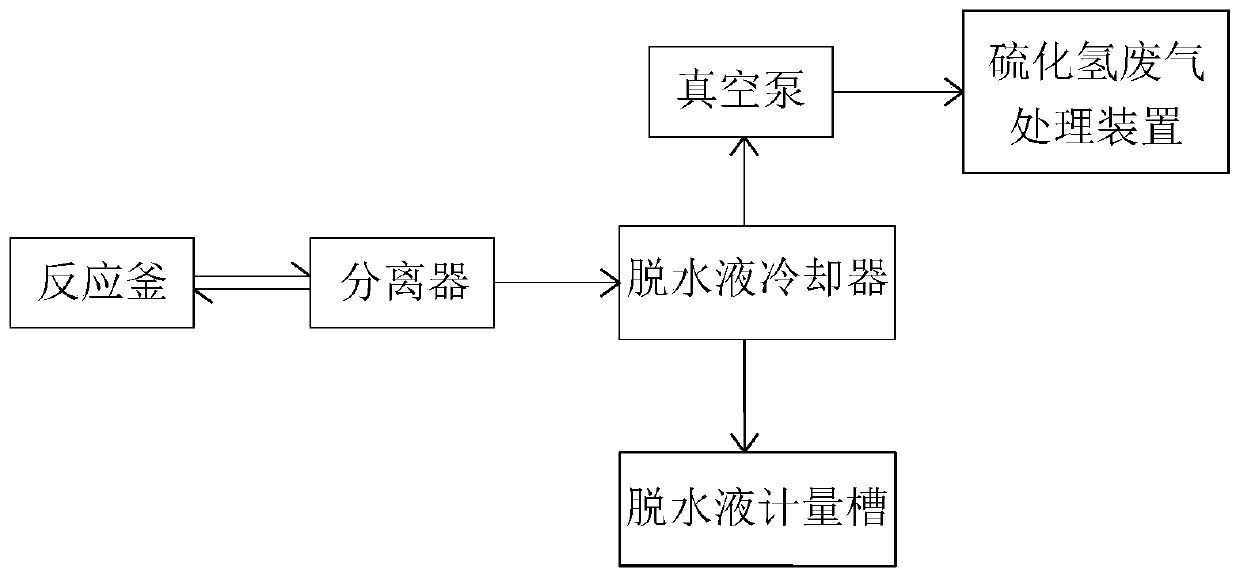Method for dehydrating sodium sulfide polyhydrate in polyphenylene sulfide production
A technology of sodium hydrosulfide and polyphenylene sulfide, which is applied in the field of sodium sulfide dehydration, can solve the problems of wide fluctuation range of product molecular weight, high cost, and instability, and achieve the goal of reducing secondary separation costs, stable water content, and stable quality Effect
- Summary
- Abstract
- Description
- Claims
- Application Information
AI Technical Summary
Problems solved by technology
Method used
Image
Examples
Embodiment Construction
[0028] The following will clearly and completely describe the technical solutions in the embodiments of the present invention with reference to the accompanying drawings in the embodiments of the present invention. Obviously, the described embodiments are only some, not all, embodiments of the present invention. Based on the embodiments of the present invention, all other embodiments obtained by persons of ordinary skill in the art without making creative efforts belong to the protection scope of the present invention.
[0029] Unless otherwise specified, the technical means used in the implementation examples are conventional means well known to those skilled in the art.
[0030]The invention provides a method for dehydrating sodium polyhydrate sulfide in the production of polyphenylene sulfide. The specific method is: sodium polyhydrate sulfide, NMP (N-methylpyrrolidone), auxiliary agent (lithium chloride or sodium acetate), hydrogen Sodium oxide is added to the reaction ket...
PUM
 Login to View More
Login to View More Abstract
Description
Claims
Application Information
 Login to View More
Login to View More - R&D
- Intellectual Property
- Life Sciences
- Materials
- Tech Scout
- Unparalleled Data Quality
- Higher Quality Content
- 60% Fewer Hallucinations
Browse by: Latest US Patents, China's latest patents, Technical Efficacy Thesaurus, Application Domain, Technology Topic, Popular Technical Reports.
© 2025 PatSnap. All rights reserved.Legal|Privacy policy|Modern Slavery Act Transparency Statement|Sitemap|About US| Contact US: help@patsnap.com

